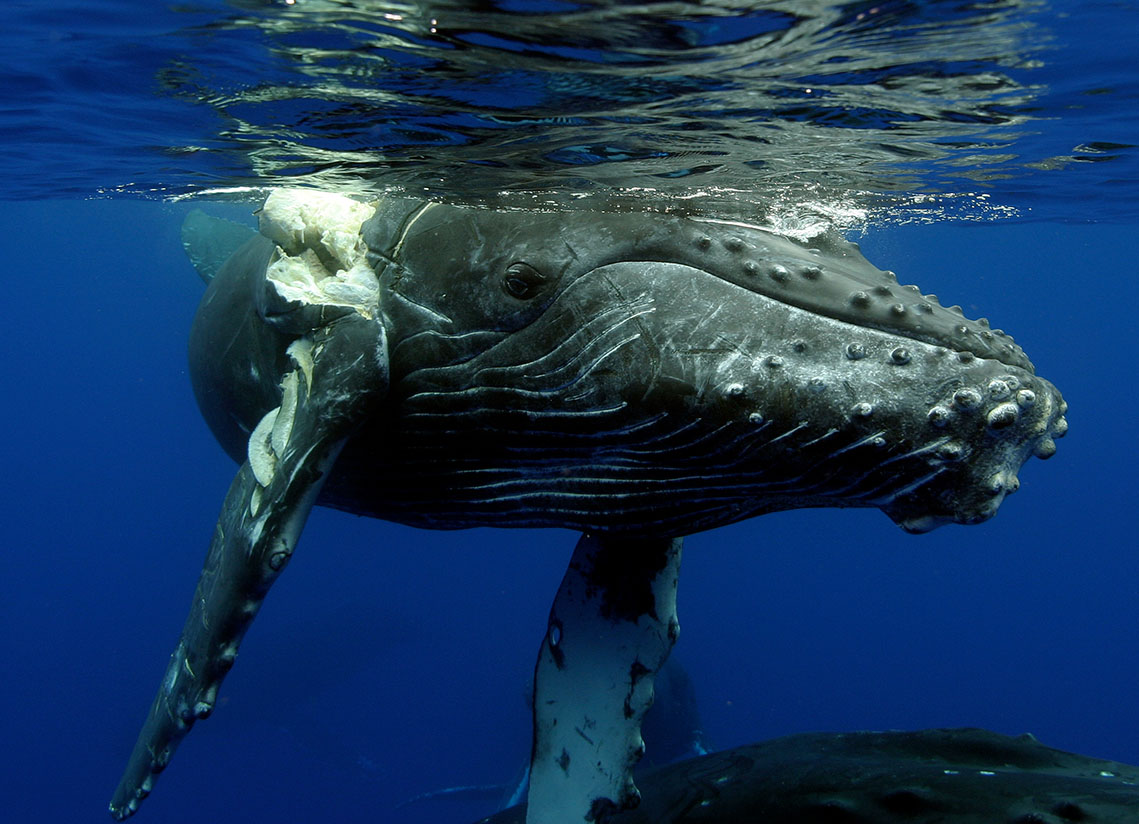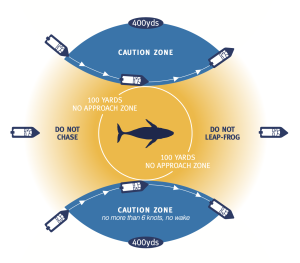Boating with Whales

Whale showing injury from impact with vessel propeller – Image taken under NOAA Fisheries Marine Mammal Health and Stranding Response Program Permit (#932-1489)
Boating during whale season is safe and easy when you’re aware of the best practices and take a few simple precautions.
Between the months of November and April, up to 12,000 koholā, or humpback whales, come to Hawai‘i to breed, calve, and nurse their young in our warm, subtropical waters.
Here are some safe boating practices for all ocean users operating any type of vessel, drones, or watercraft, including paddleboards, kayaks, boats, jet skis, efoils and canoes, to help protect you and humpback whales while you share the waters around Hawai’i:
- “Go Slow Whales Below” speed recommendations

PC: Pacific Whale Foundation
- Travel within 15 knots or less (or minimal planing speed), during whale season, within water 100 fathoms (600ft) deep or less, where there might be whales.
- When traveling at night, reduce your speed even further, since it is harder so see a whale after dark.
- When approaching and departing whales within 400 yards, reduce vessel speed to 6 knots or less.
- Keep your distance — it’s the law!
- Do not approach any whale closer than 100 yards (90m) by any means (unless under permit).
- Do not leapfrog – if you see a whale traveling, you are not allowed to intentionally intersect its path so it approaches you.
- Stay alert
- Post a designated observer/lookout while underway to help spot whales.
- Look ahead for “blows” (the animal’s exhalation), the backs of whales, flukes (tails), etc.
- Keep your hands on the wheel and throttle at all times, and be ready to take action immediately to avoid a whale in your path.
- Don’t assume the whales can see you
- Whales may not be able to detect you, and get out of your way in time.
- Calves are especially vulnerable since they are curious and may not have learned to be cautious of vessels.
- Stop if a whale approaches you
- Stop immediately if a whale approaches your vessel.
- Leave engines running and in neutral until whale moves away.
- Go around whales from behind
- If you encounter whales in your path, go behind them while maintaining more than 100 yards distance.
- Do not attempt to get in front of whales to get past them.
- Please kōkua
- Warn other vessels: if you spot a whale, use appropriate VHF radio protocol or other means to alert other vessels that may not be aware of whales in their path.
- If you are involved in a collision, or see an injured or entangled whale, please call the NOAA Marine Wildlife Hotline (888) 256-9840. Or, hail the U.S. Coast Guard on VHF channel 16.
The presence of whales should not stop you from enjoying fishing, exploring, and voyaging on the ocean. You can take steps to prevent collisions with these magnificent animals. It is as simple as understanding the five “whats” of boating during whale season. Specifically:
1. What TIME of Year?
2. What DEPTH?
3. What SPEED?
4. What DISTANCE?
5. What’s the SOLUTION?
(LAST UPDATED 7/23/25.)